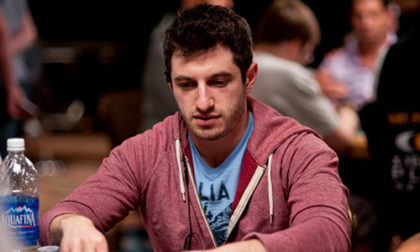Phil Galfond’s Run It Once to Prohibit Use of HUDs
Poker pro Phil Galfond announced in September 2016 that he was going to take the bold career step and open his own online poker room. The poker community was intrigued, especially since it was a well-respected poker player hatching the idea. After that, it was pretty much radio silence until last month, when Galfond posted a lengthy update on RunItOnce.eu (Run It Once will also be the name of the poker room, the same as his poker training site) to let the public know that the plan is to launch cash games this summer. He also promised to more forthcoming with updates, so he recently posted another one, letting everyone know that heads-up displays (HUDs) will be banned from Run It Once.
Galfond readily admits that it will be a controversial decision, one which may keep people away from his site. He also admits he uses HUDs and likes them and encourages other sites to allow them if that’s the way they want their site to go. But one of Galfond’s goals is to make Run It Once a site that works for players of all skill levels, so HUDs need to be banned. He says, in part:
Over time, the edges that pros have over recreational players have only increased. Our understanding of the game grows with each passing year, and novices aren’t getting any better. HUDs, which also advance over time, only widen the gap further.
“Great,” you may say as a pro, “more money for me!”
The problem, as you may know, is that most losing players have, more or less, a finite amount that they are willing to lose playing poker. Taking it faster doesn’t create a larger supply, and in fact, the opposite is usually true. Those amateurs who want to play for fun, or in the hope of improving and becoming a pro themselves, are, in some cases, losing so consistently that all the fun (and hope) is sucked out of the game for them. They quit sooner and find somewhere else to spend their time and money.
“HUDs increase a pro’s edge by giving the pro a larger informational advantage,” he adds. “They also help pros target recreational players and more quickly identify their leaks, which can be exploited for far more than the leaks of a slightly weaker pro.”
Beyond Galfond’s explanation as to why HUDs will be outlawed at Run It Once, he says that the difficult part is actually preventing them from being used. He says there are three parts to making HUDs “-EV”: “Prevention, Enforcement, and Disincentivization.”
 We’ve seen the first two parts of that at other sites, but in his blog post, Galfond focused on the third. The first way Run It Once will disincentivize players from using HUDs is to make the tables anonymous. Other poker rooms have done this, assigning players a random string of numbers or some such when they sit down. Every session, a player is given a different number. This thwarts hand tracking software from collecting data on players, as without names to tie the data to, it’s useless.
We’ve seen the first two parts of that at other sites, but in his blog post, Galfond focused on the third. The first way Run It Once will disincentivize players from using HUDs is to make the tables anonymous. Other poker rooms have done this, assigning players a random string of numbers or some such when they sit down. Every session, a player is given a different number. This thwarts hand tracking software from collecting data on players, as without names to tie the data to, it’s useless.
At Run It Once, Table Aliases, as they will be called, will be different in that each player will be given a random first name and last initial. It’s a minor difference, but Galfond and his team believe that they “will lead to a more fun and engaging playing experience, which was our biggest complaint about other anonymous sites.”
Actual human-sounding names make the games more personal feeling and simply more enjoyable. On top of that, while players won’t be able to track each other with software, the names will make it easier to mentally keep tabs on each other during a game, as it is much easier to remember that “Dan K.” has raised back at you out of position pre-flop several times already than it is to remember that it was “Player #20193884.”
Players won’t be given a new name every time they leave and return, though Galfond did not say how long of a break a player would have to take to have their alias reset.
The second prong of the disincentive plan is to give everyone access to statistics on their opponents, but this is done in a very unique way. Galfond thought about giving everyone a HUD, but thought it could still be intimidating to amateurs. Instead, Run It Once will implement Dynamic Avatars. The site will use the stats that might have been displayed in a HUD (like VPIP) and use them to create eight playstyle categories. Depending on which category a player belongs, the expression on that player’s avatar’s face will change.
The idea here is to level the informational playing field while keeping that information simple and accessible to everyone. For instance, an avatar may show a player sleeping, which would mean he is boring and plays very few hands. These dynamic avatars will only use hand data from when a player was actually playing against an opponent, so it is entirely possibly that Player A’s avatar will look different to Player B than it does to Player C if Player A has played differently against each opponent.
“This was more complicated to build than simply displaying the same information to everyone (based on all play since joining that table), but we didn’t want to create an informational imbalance, disadvantaging players who’d already been playing when a new player shows up,” Galfond says. “That would cause annoying, edge-seeking table hopping and it would punish the players who stuck around and put in more hands.”
“When you play live poker, you can see the tight guy playing on his phone the whole time or the angry drunk guy ready to tilt off his chips,” he illustrates. “Dynamic Avatars bring a similar feel to our tables.”
The point to all of this, says, Galfond, is that “we’ve made our games more fair in a way that adds to, rather than subtracts from, the playing experience.”



















COMMENTS